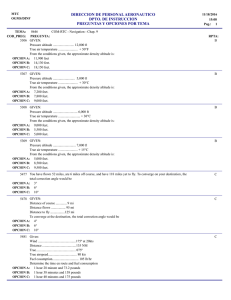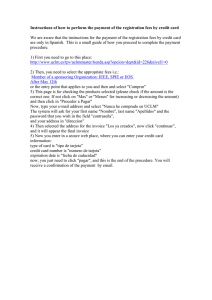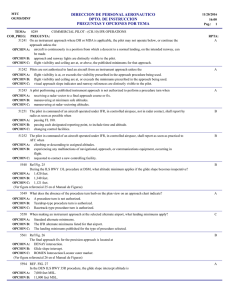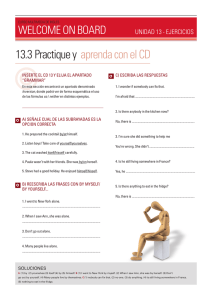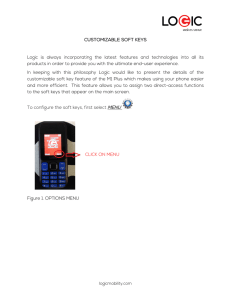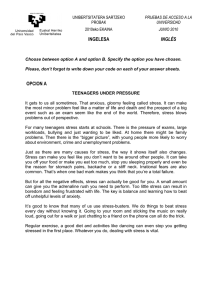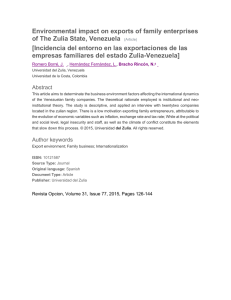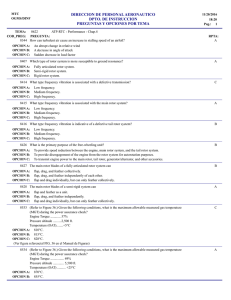DIRECCION DE PERSONAL AERONAUTICO DPTO. DE
Anuncio
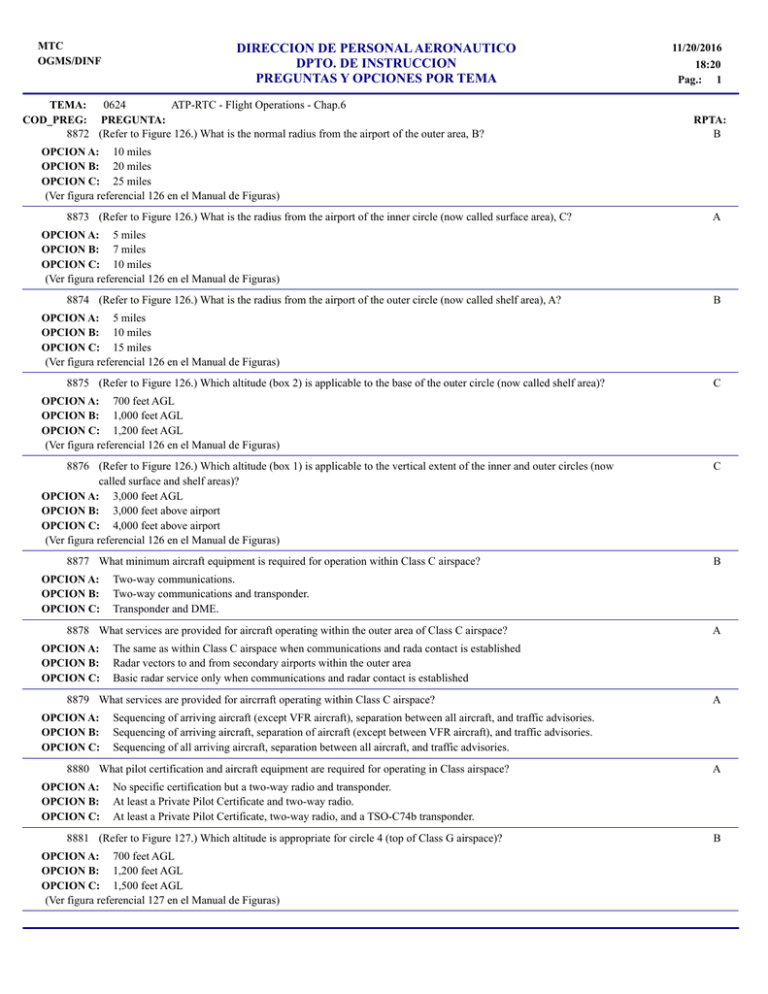
MTC OGMS/DINF DIRECCION DE PERSONAL AERONAUTICO DPTO. DE INSTRUCCION PREGUNTAS Y OPCIONES POR TEMA TEMA: 0624 ATP-RTC - Flight Operations - Chap.6 COD_PREG: PREGUNTA: 8872 (Refer to Figure 126.) What is the normal radius from the airport of the outer area, B? 11/20/2016 18:20 Pag.: 1 RPTA: B OPCION A: 10 miles OPCION B: 20 miles OPCION C: 25 miles (Ver figura referencial 126 en el Manual de Figuras) 8873 (Refer to Figure 126.) What is the radius from the airport of the inner circle (now called surface area), C? A OPCION A: 5 miles OPCION B: 7 miles OPCION C: 10 miles (Ver figura referencial 126 en el Manual de Figuras) 8874 (Refer to Figure 126.) What is the radius from the airport of the outer circle (now called shelf area), A? B OPCION A: 5 miles OPCION B: 10 miles OPCION C: 15 miles (Ver figura referencial 126 en el Manual de Figuras) 8875 (Refer to Figure 126.) Which altitude (box 2) is applicable to the base of the outer circle (now called shelf area)? C OPCION A: 700 feet AGL OPCION B: 1,000 feet AGL OPCION C: 1,200 feet AGL (Ver figura referencial 126 en el Manual de Figuras) 8876 (Refer to Figure 126.) Which altitude (box 1) is applicable to the vertical extent of the inner and outer circles (now called surface and shelf areas)? OPCION A: 3,000 feet AGL OPCION B: 3,000 feet above airport OPCION C: 4,000 feet above airport (Ver figura referencial 126 en el Manual de Figuras) 8877 What minimum aircraft equipment is required for operation within Class C airspace? OPCION A: OPCION B: OPCION C: A Sequencing of arriving aircraft (except VFR aircraft), separation between all aircraft, and traffic advisories. Sequencing of arriving aircraft, separation of aircraft (except between VFR aircraft), and traffic advisories. Sequencing of all arriving aircraft, separation between all aircraft, and traffic advisories. 8880 What pilot certification and aircraft equipment are required for operating in Class airspace? OPCION A: OPCION B: OPCION C: A The same as within Class C airspace when communications and rada contact is established Radar vectors to and from secondary airports within the outer area Basic radar service only when communications and radar contact is established 8879 What services are provided for aircrraft operating within Class C airspace? OPCION A: OPCION B: OPCION C: B Two-way communications. Two-way communications and transponder. Transponder and DME. 8878 What services are provided for aircraft operating within the outer area of Class C airspace? OPCION A: OPCION B: OPCION C: C A No specific certification but a two-way radio and transponder. At least a Private Pilot Certificate and two-way radio. At least a Private Pilot Certificate, two-way radio, and a TSO-C74b transponder. 8881 (Refer to Figure 127.) Which altitude is appropriate for circle 4 (top of Class G airspace)? OPCION A: 700 feet AGL OPCION B: 1,200 feet AGL OPCION C: 1,500 feet AGL (Ver figura referencial 127 en el Manual de Figuras) B MTC OGMS/DINF DIRECCION DE PERSONAL AERONAUTICO DPTO. DE INSTRUCCION PREGUNTAS Y OPCIONES POR TEMA 8882 (Refer to Figure 127.) Which altitude is normally appropriate for circle 5 (top of Class D airspace)? 11/20/2016 18:20 Pag.: 2 B OPCION A: 1,000 feet AGL OPCION B: 2,500 feet AGL OPCION C: 3,000 feet AGL (Ver figura referencial 127 en el Manual de Figuras) 8883 (Refer to Figure 127.) Which altitude is appropriate for circle 6 (top of Class D airspace)? B OPCION A: 500 feet AGL OPCION B: 700 feet AGL OPCION C: 1,200 feet AGL (Ver figura referencial 127 en el Manual de Figuras) 8885 (Refer to Figure 127.) Which altitude is appropriate for circle 2 (top of Class C airspace)? B OPCION A: 3,000 feet AGL OPCION B: 4,000 feet AGL OPCION C: 3,500 feet AGL (Ver figura referencial 127 en el Manual de Figuras) 8888 (Refer to Figure 127.) What is the base of the Class A airspace)? C OPCION A: 12,000 feet AGL OPCION B: 14,500 feet AGL OPCION C: FL 180 (Ver figura referencial 127 en el Manual de Figuras) 8889 What restriction applies to a large, turbine-powered airplane operating to or from a primary airport in Class B airspace? OPCION A: Must not exceed 200 knots within Class B airspace OPCION B: Must operate above the floor when within lateral limits of Class B airspace OPCION C: Must operate in accordance with IFR procedures regardiess of weather conditions B 8897 (Refer to Figure 128.) What in-flight visibilty and distance from clouds is required for a flight at 8,500 feet MSL (above 1,200 feet AGL) in VFR conditions during daylight hours for the circle 4 area? OPCION A: 1 mile; (E) 1,000 feet; (G) 2,000 feet; (H) 500 feet OPCION B: 3 miles; (E) 1,000 feet; (G) 2,000 feet; (H) 500 feet OPCION C: 5 miles; (E) 1,000 feet; (G) 1 mile; (H) 1,000 feet (Ver figura referencial 128 en el Manual de Figuras) A 9044 What action is expected of an aircraft upon landing at a controlled airport? OPCION A: OPCION B: OPCION C: Continue taxiing in the landing direction until advised by the tower to switch to ground control frequency. Exit the runway at the nearest suitable taxiway and remain on tower frequency until instructed otherwise. Exit the runway at the nearest suitable taxiway and switch to ground control upon crossing the taxiway holding lines. 9053 To assure expeditious handling of a civilian air ambulance flight, the word "LIFEGUARD" should be entered in which section of the flight plan? OPCION A: Aircraft type/special equipment block OPCION B: Pilot's name and address block OPCION C: Remarks block 9086 What are FDC NOTAMs? OPCION A: OPCION B: OPCION C: C C Conditions of facilities en route that may cause delalys Time critical aeronautical information of a temporary nature from distant centers Regulatory amendments to published IAPs and charts not yet available in normally published charts 9087 What type information is disseminated by NOTAM(D)s? OPCION A: OPCION B: OPCION C: B Status of navigation aids, ILSs, radar service available, and other information essential to planning Airport or primary runway closings, runway and taxiway conditions, and airport lighting alds outages Temporary flight restrictions, changes in status in navigational alds, and updates on equipment such as VASI A MTC OGMS/DINF DIRECCION DE PERSONAL AERONAUTICO DPTO. DE INSTRUCCION PREGUNTAS Y OPCIONES POR TEMA 9092 Except during an emergency, when can a pilot expect landing priority? OPCION A: OPCION B: OPCION C: 11/20/2016 18:20 Pag.: 3 C When cleared for an IFR approach When piloting a large, heavy aircraft In turn, on a first-come, first-serve basis 9096 If ATC requests a speed adjustment that is not within the operating limits of the aircraft, what action must the pilot take? OPCION A: Maintain an airspeed witin the operating limitations as close to the requested speed as possible. OPCION B: Attempt to use the requested speed as long as possible, then request a reasonable airspeed from ATC. OPCION C: Advise ATC of the airspeed that will be used. C 9396 What is the maximum indicated airspeed a reciprocating-engine-powered airplane may be operated within Class B airspace? OPCION A: 180 knots. OPCION B: 230 knots. OPCION C: 250 knots. C 9398 At what maximun indicated airspeed may a reciprocating-engine-powered airplane be operated within Class D airspace? OPCION A: 156 knots. OPCION B: 180 knots. OPCION C: 200 knots. C 9399 What is the maximum indicated airspeed a turbine-powered aircraft may be operated below 10,000 feet MSL? B OPCION A: OPCION B: OPCION C: 288 knots. 250 knots. 230 knots. 9402 What action should a pilot take when a clearance is received from ATC that appears to be contrary to a regulation? OPCION A: OPCION B: OPCION C: Read the clearance back in its entirety. Request a clarification from ATC. Do not accept the clearance. 9424 Pilots should state their position on the airport when calling the tower for takeoff OPCION A: OPCION B: OPCION C: B from a runway intersection. from a runway intersection, only at night. from a runway intersection, only during instrument conditions. A
